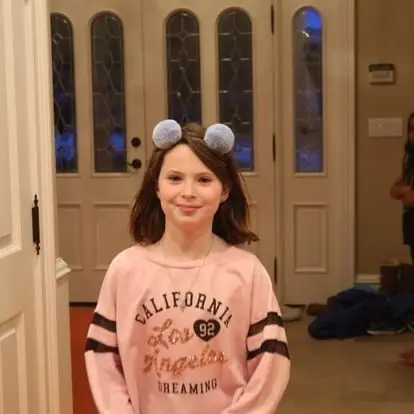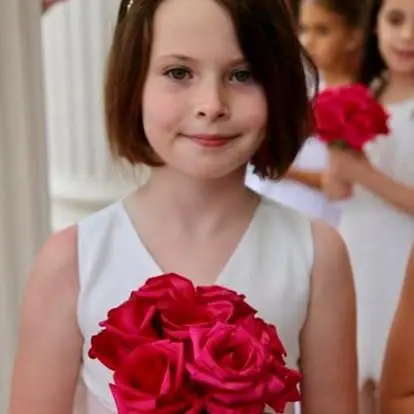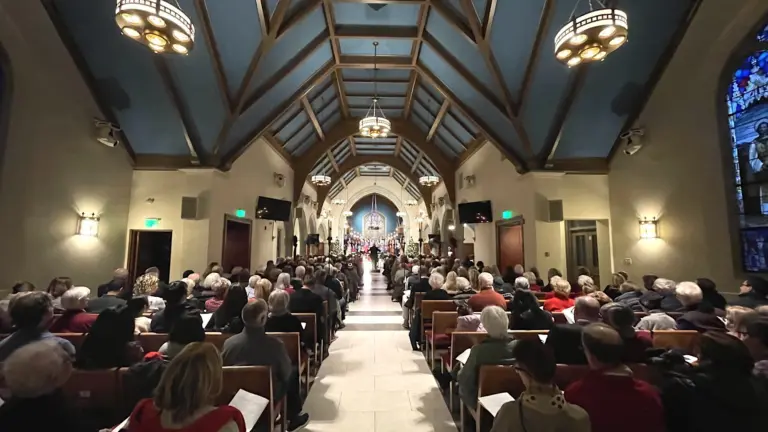By Mairead Finn

Vivienne would have turned 17 on August 31st and would be starting 11th grade at Sacred Heart Greenwich — a year that should have been filled with planning, dreaming, and deciding where her next steps in life would take her. At her essence, Vivienne was an artist, a writer, a fashionista, and above all, a soul who cared deeply for others. Her light, creativity, and compassion touched everyone around her. But a cruel disease — diffuse intrinsic pontine glioma (DIPG)— took her from us far too soon. An inoperable brain cancer ended her life at the age of 11 years.
Quiet grief will never be enough to find a cure, so this year, we choose to celebrate Vivienne’s life through action. We have launched The Vivienne C. Finn Foundation, Inc. in her name, with a mission to honor her memory and create change for other families facing this devastating reality. Through the foundation, we are:
• Supporting families navigating childhood cancer
• Championing legislative change to expand access to lifesaving treatments and clinical trials
• Accelerating pediatric cancer research so that children in Fairfield County and beyond can receive the care they need close to home
September is Pediatric Cancer Awareness Month
Unless you’ve been personally affected, you may not know how urgent this fight is:
• 1 in 264 children and adolescents will be diagnosed with cancer before age 20
• In 2025, an estimated 9,550 children (ages 0–14) and 5,140 adolescents (ages 15–19) will receive a cancer diagnosis
• On average, 14% of children die within five years of diagnosis
• There are 12+ major types of pediatric cancers and 100+ subtypes
Breakdown of Pediatric Cancer Diagnoses by Type
Cancer Type % of Pediatric Cases
Leukemia 28%
Central Nervous System Tumors 27%
Lymphomas 12%
Neuroblastoma 6%
Wilms Tumor 5%
Germ Cell Tumors 5%
Rhabdomyosarcoma 3%
Retinoblastoma 3%
Osteosarcoma 3%
Ewing Sarcoma 1%
Pediatric brain and central nervous system tumors are now the leading cause of cancer-related deaths among children and adolescents under 19.
Across the U.S., there are more than 2.1 million cancer survivors who were diagnosed during childhood and are now ages 15–39 years — yet, despite these numbers, pediatric cancer research remains significantly underfunded. Only 4% of the National Cancer Institute’s budget — approximately $288 million in 2024 — was spent on childhood cancer.
The Harsh Reality After Diagnosis
The days and weeks after diagnosis move at lightning speed — a blur of fear, decision-making, and urgent action. One moment, you are living in your familiar world, and the next, you are thrust into a reality you never imagined. Almost instantly, you’re assigned a team of specialists — pediatric oncologists, surgeons, radiation oncologists, nurses, psychologists, and social workers — all speaking a new language you’ve never had to understand before.
Diagnostic testing begins immediately: blood work, genomic testing, MRIs, and biopsies to confirm the tumor’s profile and aggressiveness. Then, in what feels like a nightmare, you’re asked to make impossible choices — selecting a clinical trial or treatment plan your child can best tolerate and endure, hoping it offers a chance at a cure.
Meanwhile, a constant worry lingers: Will our insurance cover this? Will my child even have access to the treatment they need?
• 1 in 4 families lose 40% or more of their annual income due to treatment-related work disruptions
• 1 in 3 families face job loss, reduced hours, or are forced to quit altogether
The Fight for Time
Imagine being ushered into a small consultation room and hearing the unthinkable: your vibrant 10-year-old daughter — who just yesterday was doing cartwheels and skateboarding — has nine months to live. She might not even reach her next birthday.
In that moment, everything changes. What matters most becomes painfully clear: time together. For Vivienne, that meant staying close to home — continuing school, sharing family dinners, and living each day surrounded by the people and places she loved.
We chose Yale New Haven and Memorial Sloan Kettering for her trials, but sadly, they were not successful. Still, we fight on — for Vivienne, and for every child facing this unimaginable journey.
Policy Threats Put Children at Risk
The newly approved “One Big Beautiful Bill Act” poses an urgent threat to children battling cancer:
• $1 trillion in Medicaid cuts could strip healthcare coverage from 186,580 Connecticut residents, including thousands of children on HUSKY and Access Health CT
• Many children could lose access to out-ofstate clinical trials that represent their only hope
Additionally, the 15% cap on indirect costs for NIH research grants threatens the infrastructure that sustains lifesaving innovation. These funds aren’t “overhead” — they support labs, trial coordination, technology, and patient navigation. Slashing them means slower drug development, fewer innovative treatments, and lost scientific talent.
A Crisis of Innovation
In the past 30 years, only seven drugs have been approved by the FDA specifically to treat childhood cancers, compared to 200+ drugs for adults. The gap exists because developing pediatric treatments is expensive, the population is smaller, and drug companies lack incentives.
As Sam Blackman, co-founder of Day One Biopharmaceuticals, explains, the fastest way forward is adapting promising adult therapies for kids — but this requires financial incentives and legislative action.

What We Can Do — Together
1. Fuel Research Through Philanthropy
Vivienne’s own journey makes this personal. When she qualified for ONC201 — now known as Modeyso, FDA-approved as of August 2025 — the Finn Foundation had to invest directly in Chimerix to open a trial arm at Yale New Haven. No family should ever have to fund lifesaving access. Simply put the company had run out of money. It couldn’t fund the production of any more drugs. So they reached out to private investors to continue their operations and in return Vivienne gained access to the trial.
Half of pediatric cancer research funding comes from private philanthropy. Without it, promising trials stall.
2. Drive Change Through Federal Advocacy
We proudly support the Give Kids a Chance Act, which incentivizes companies to develop pediatric-specific treatments giving them review vouchers to expedite the process for FDA approval , expands access to combination therapies, and protects families by tightening orphan drug loopholes.
Special thanks to Rep. Jim Himes, the first Connecticut representative to co-sponsor this vital bill. But we need more voices. Contact your representatives. Share Vivienne’s story. Stand with us.
3. Act at the State Level
Connecticut can lead the fight by creating a Pediatric Cancer Research Fund, investing $2–5 million annually in Yale New Haven Children’s Hospital, UConn Health, and partner institutions.
• Establish a Pediatric Oncology Research & Innovation Hub at Yale
• Provide a state tax check-off to fund research
• Pass legislation modeled after New Jersey’s Grace Eline Foundation Act to improve trial access, strengthen HUSKY/Medicaid coverage, and require annual reporting on incidence, enrollment, and family impact.
• Expand family support services like housing stipends, transportation aid, and Pediatric Cancer Navigator programs
Eight other states have already taken similar action, unlocking $99+ million in funding. Connecticut must not fall behind. Tina Courpas will lead efforts to explore the legislative path forward.
We Go Gold for Vivienne — and for All Kids
Childhood cancer is not rare. Every day, 47 children are diagnosed. These kids face endless surgeries, biopsies, harsh treatments, and often lifelong side effects. Too many lose their lives — not only to cancer itself but to outdated, toxic treatments.
Vivienne’s light drives us forward — fighting for better treatments, better options, and better futures. Her creativity, love, and generosity live on through The Vivienne C. Finn Foundation Inc..
We invite you to learn more and join us: www.vcfinnfoundation.org
Sources Statistics and pediatric cancer data cited above come from the Coalition Against Childhood Cancer (CAC2): https://cac2.org




